SWELL – Newpoint Terminal WwPS (2021)
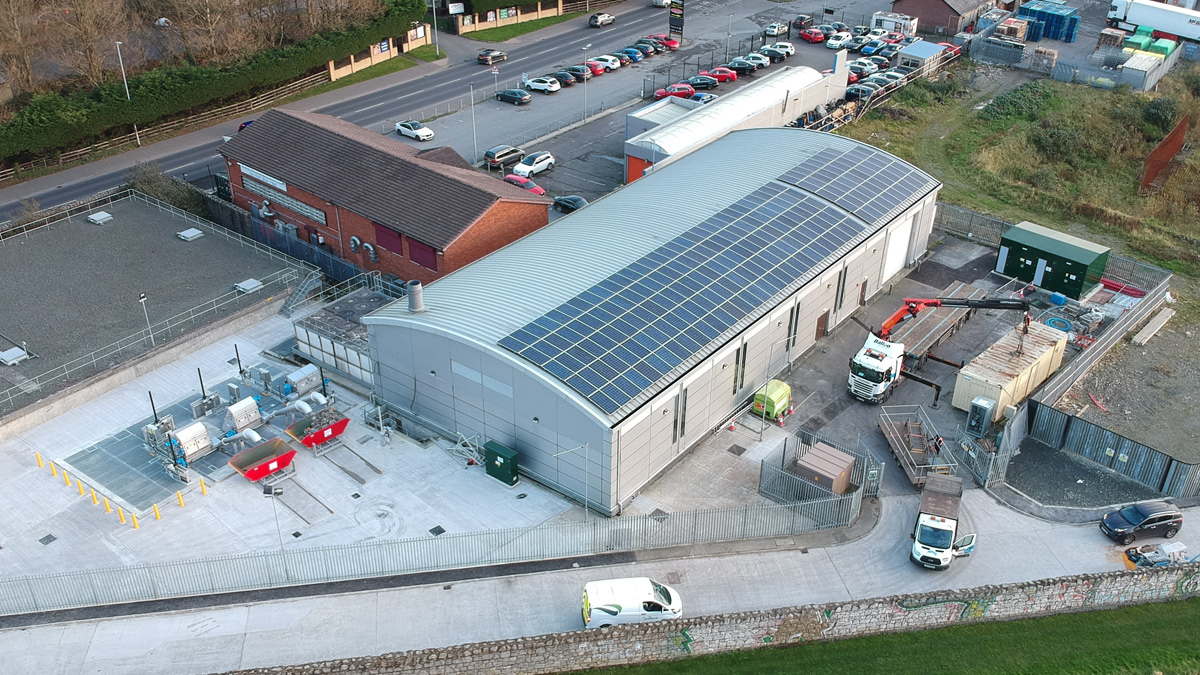
Completed site - Courtesy of SWELL NI Water
Newry is situated some 35 miles south-west of Belfast at the northernmost end of Carlingford Lough, where the Clanrye River/Newry Estuary enters the sea. Newpoint Wastewater Pumping Station (WwPS), situated off the Warrenpoint Road, is the terminal pumping station for the city. The WwPS receives incoming flows from the greater Newry and Carlingford area at a rate of 500 l/s by means of both the gravity and pumped network. The incoming flows at Newry undergo primary screening before being transferred through a pumped network to Newry Wastewater Treatment Works (WwTW) located at Greenbank approximately 1km away for final treatment.
Need for upgrade
Continued catchment growth and excessive flows arriving at the pumping station presented a significant pollution risk and a potential barrier to achieving EU Water Framework Directive ‘good’ water quality status for the Newry Estuary and Carlingford Lough. In this respect, Newpoint WwPS was identified by NI Water as a key wastewater site within the Carlingford Lough catchment that would benefit from investment through the SWELL project to bring about improved water quality in Carlingford Lough.
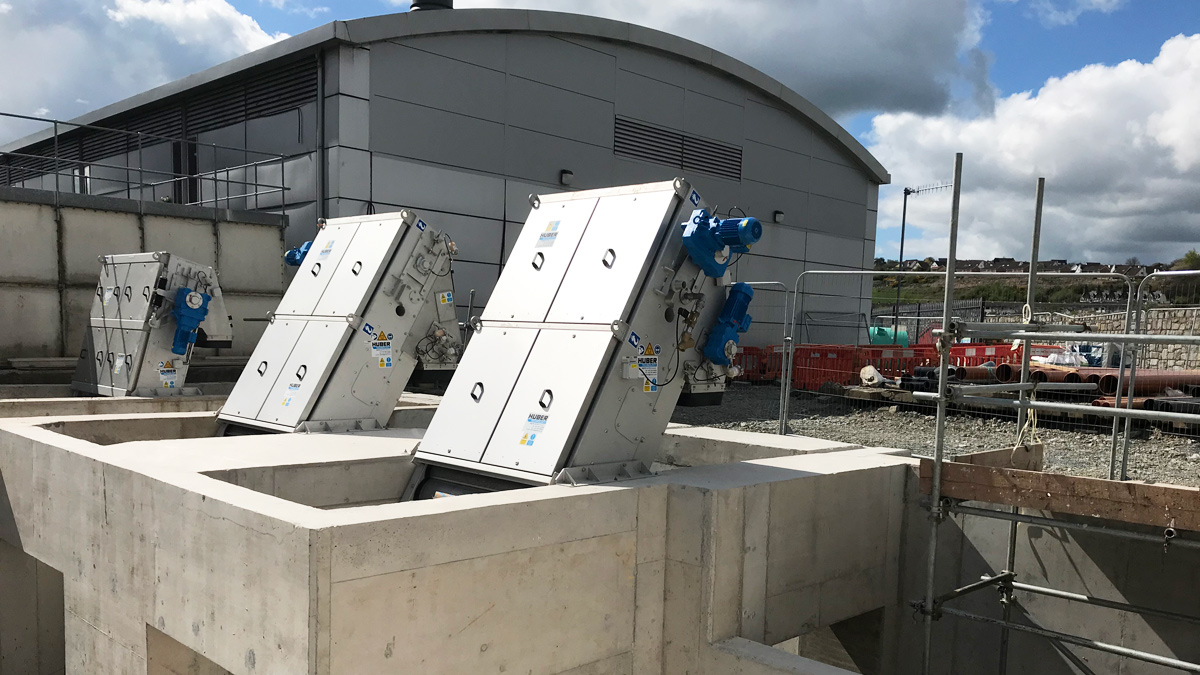
Screening equipment – Courtesy of SWELL NI Water
What the upgrade involved
The existing Newpoint WwPS was equipped with three wastewater pumps that transfer flow (approximately 500 l/s – enough to fill an Olympic swimming pool in less than an hour and a half) 1km to Newry WwTW, as well as four storm pumps that pump stormwater flows to two storage tanks within the WwPS site.
Under the SWELL project, new coarse screening equipment was provided to protect the existing pumps from blockages and potential loss of wastewater to the adjacent Newry River. Fine screening apparatus was also be provided on the storm tank overflow to provide further protection to the river during periods of prolonged heavy rainfall.
Early contractor involvement (ECI)
Continuing with the collaborative approach adopted by the SWELL partnership, GRAHAM were tasked with providing concept design and project delivery proposals for Newpoint WwPS. GRAHAM design team developed a total of three feasible design options. Following a collaborative design optioneering process with clients NI Water and project managers McAdam, the selected design included offline construction of a new below-ground reinforced concrete structure housing screening equipment to protect the existing foul pumps from blockages and the installation of further screening equipment on the existing storm overflow network which discharges to the adjacent Newry River.
The chosen option required the structure to be constructed to a positional tolerance of +/- 10mm to avoid existing infrastructure and allow interconnecting pipework to be installed when converting from offline to online.
Site constraints
Existing buried infrastructure, including a 1600mm concrete inlet sewer and a 1700mm steel storm overflow pipe, site drainage, ducts and power supply etc., was a significant consideration when forming the overall design and delivery of the project. During the ECI phase GRAHAM utilised the latest ground penetrating radar (GPR) equipment to identify all underground assets. Information collated from the GPR survey was further confirmed by way of an intrusive survey, which enabled the design team to develop a 3D model of the existing site with significant accuracy to form a baseline for designs to commence.
With such a confined site, the only area available for the construction of the new reinforced concrete (RC) structure was in a location which provided only 400mm of working room outside the perimeter of the new structure; and with most of the available space needed for shoring equipment, there was little to no physical working space.
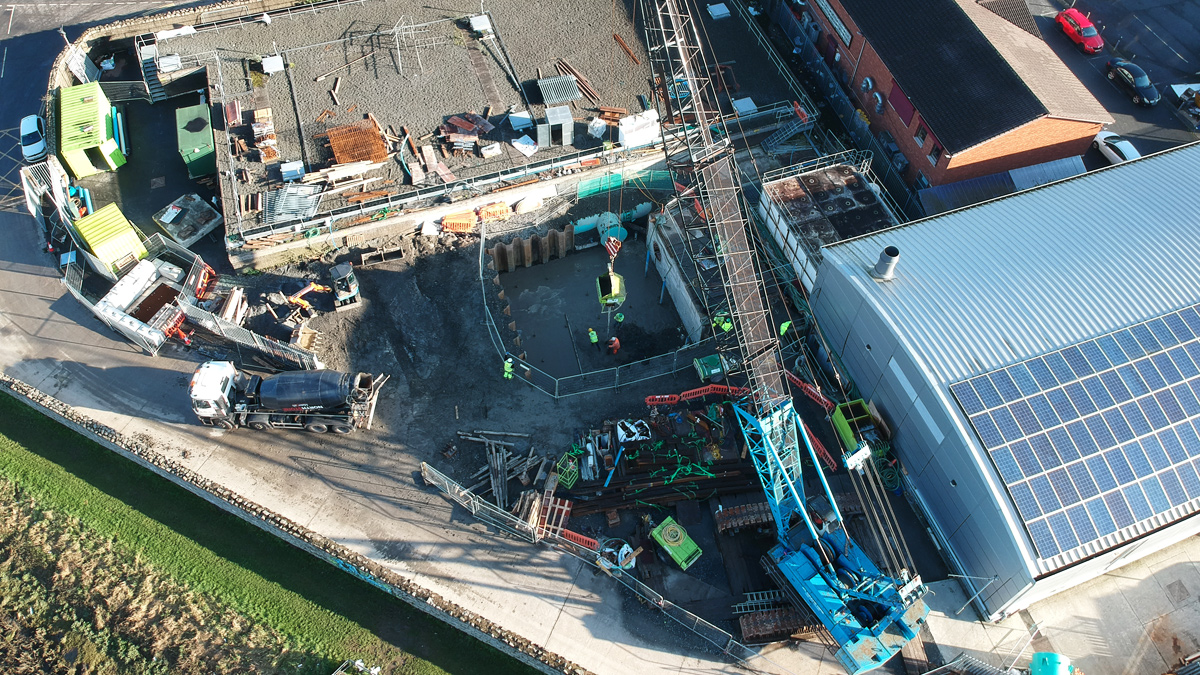
Concrete pour on the confined site – Courtesy of SWELL NI Water
Ground engineering
Site investigations completed during the ECI Phase enabled early identification of the ground conditions. The results showed that the area where the new RC structure would be built was largely made up of soft/loose silts and sand to a depth of 8m below ground level (bgl), in turn overlaying medium dense gravel up to 17m (bgl). Bedrock was encountered at the depth of 17m (bgl) and subsequent ground investigations (GI) identified a water table level at 2m (bgl).
With a required formation level for the new structure at 9m (bgl), it was deemed that the poor soil conditions would not be suitable to carry the load of a newly built inlet chamber. GRAHAM’s design team, in collaboration with specialist sub-contractor Hamilton Bogie, proposed to rest a new structure on 50 (No.) tubular steel mini piles, which transferred the load to deeper, high bearing capacity bedrock strata.
The combination of the high water table and poor soil conditions, coupled with the tight positional tolerances, limited the shoring solutions available. GRAHAM proposed, and later constructed, a braced cofferdam.
In advance of excavation works, a number of well points were installed to a depth of 16m below ground level, which successfully lowered the groundwater table to allow for excavation of the sand and gravel layers in dry conditions.
Newpoint Terminal Pumping Station: Supply chain – key participants
- Client: NI Water
- Main contractor: GRAHAM
- Project Managers: McAdam
- Civil design: AECOM
- MEICA design and install: Enisca Ltd
- Temporary works and piling: Ward Piling
- Reinforced concrete works: Ideal Formwork
- Large diameter bespoke pipes: Freeflow Pipe Systems
- Concrete: Northstone
- Reinforcement: Walter Watson
- Hydro-demolition: Amlee Group
- Pump hire: Aska Sykes
- Foundation Piles: Hamilton Bogie
- Screen Supply: Huber Technology
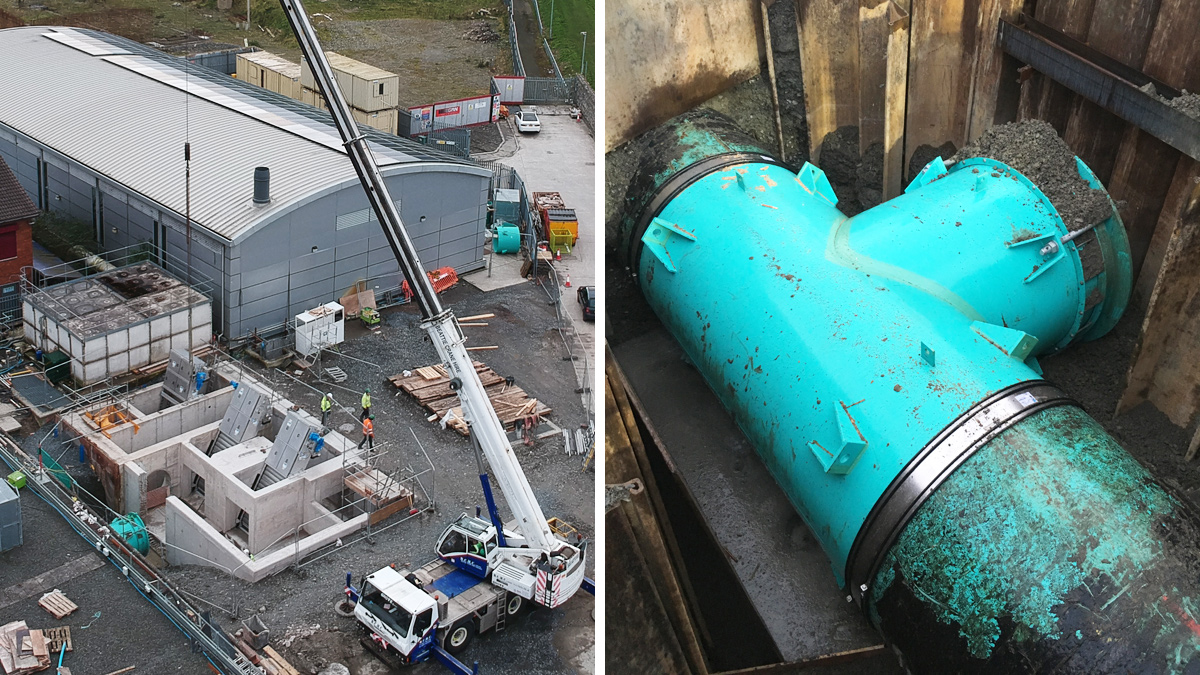
(left) Installation of the screens and (right) 1600mm diameter pipework connection – Courtesy of GRAHAM
Construction techniques
While the primary function of the braced cofferdam was to provide a safe working environment to construct the reinforced concrete chamber, the cofferdam also undertook various other roles due to the design constraints described earlier in the text. Likewise, the new concrete structure was relied upon at various stages to fulfil temporary works duties.
- External formwork: Due to the insufficient available working room within the cofferdam it was not possible to construct the walls of the proposed structure using traditional double-sided formwork. That being the case single-sided formwork was utilised to construct the walls, with the sheet piles of the cofferdam acting as external support during concrete pours. The internal wales of the cofferdam however presented a problem. They needed to be removed to allow the external walls of the RC structure to be built while also acting as a support solution. To achieve this, the design consideration was given to allow the walls to receive the temporary soil loads when the wales were removed.
- Formwork pressures: Owing to the fact the new walls are 9m high and that the construction team would be limited to single-sided formwork, the concrete pressures encountered for any sizeable height of each pour would be significant. As a result wall pours were limited to a height of (maximum) 1.7m per pour.
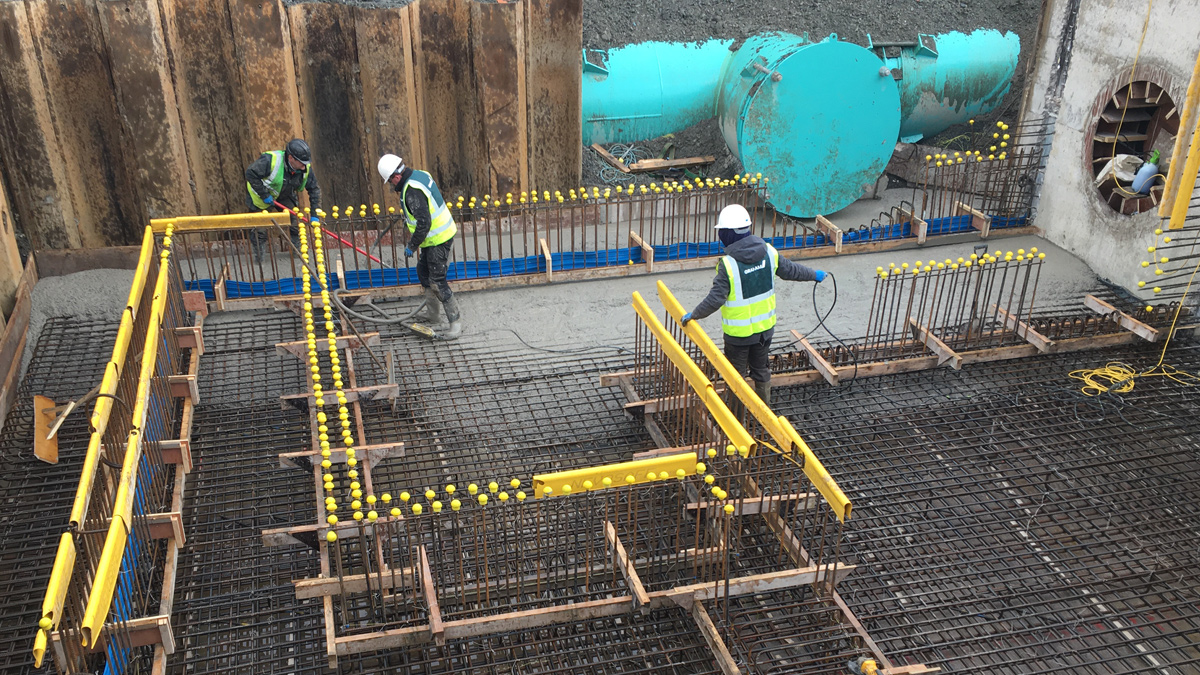
Steelwork on the overflow chamber – Courtesy of GRAHAM
Health & Safety
Reduction of working at height hours
The construction team designed and installed a climbing shutter system based around the principles of modern slip form construction, enabling continuous, non-interrupted cast-in-place concrete walls. The technique relies on quick-setting properties of concrete to emerge from the form with strength to support the pressure of the new concrete and resist collapse. Use of the climbing shutter negated the need to deploy personnel to install and modify scaffolding at each stage of the concrete pour. A total of 450 working at height hours were mitigated thanks to this solution.
Occupational H&S (silica dust, hand arm vibration)
Hydro-demolition techniques were introduced to complete all concrete demolition works, resulting in a significant mitigation of occupational risks such as exposure to silica dust and vibrations.
Covid-19
GRAHAM site management had followed government guidelines and introduced safe system of works to deal with Covid-19 risks, allowing their site team to complete the project after initial shutdown caused by the pandemic. Social distancing, staggered lunch breaks, appropriate PPE, daily temperature checks for site operatives and an increased cleaning regime were some of the examples implemented.
Community engagement
The GRAHAM team and NI Water’s SWELL Project Management Team visited a local secondary school for girls to promote the role of women in the construction industry. The visit also gave pupils the opportunity to ‘enter’ the site thanks to a Virtual Reality (VR) model built internally by GRAHAM design team for this project.
The local community were kept abreast of progress through regular letter drops and a detailed information board provided details on the project to passers-by.
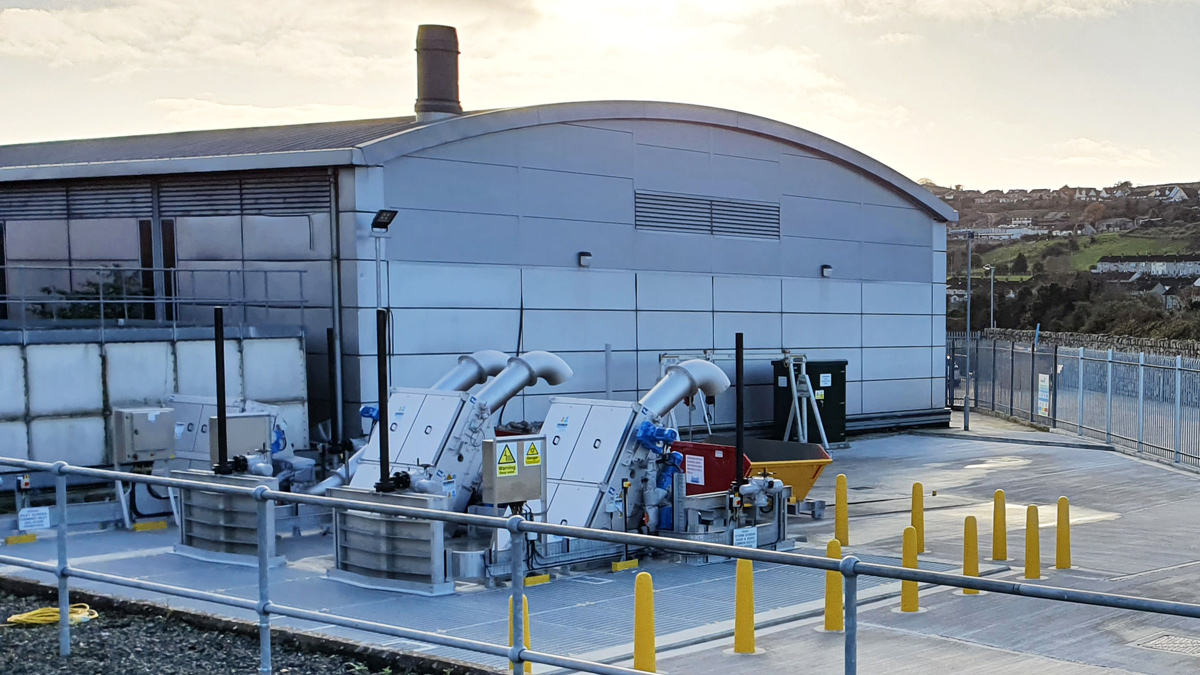
Completed works – Courtesy of GRAHAM
Programme efficiencies
- Off-site fabrication of large diameter steel pipework (1600mm) ensured the efficient progression of on-site construction activities.
- The application of BIM modelling software and VR significantly aided the team during both the design and construction stages, resulting in efficient decision making. The VR tool was also used to promote the SWELL Project during a launch event, client visits and other PR workshops.
- Following the outbreak of Covid-19, the project team promptly implemented procedures to maintain and achieve the construction programme milestones. The project was delivered on time for post-improvement evaluation, regardless of the unexpected delay caused by the pandemic. Collaboration with NI Water and suppliers helped minimise additional costs incurred by the contractor due to shortages of supplies, longer lead times for equipment and overall higher cost of labour and materials.
Project benefits
The provision of improved operational control and the installation of new coarse and fine screening equipment at the Newpoint WwPS site has resulted in enhanced discharge to the Newry River and will help Carlingford Lough achieve future ‘good’ WFD classification status. The upgrade at the WwPS will also enable more flows to be passed on to Newry WwTW for treatment.






